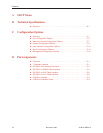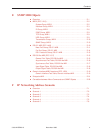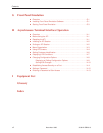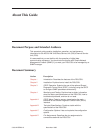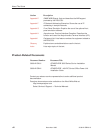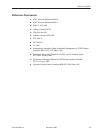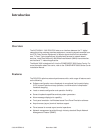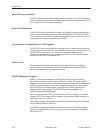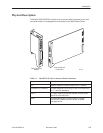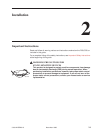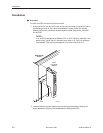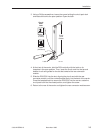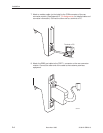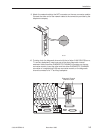
Introduction
1-2
3166-A2-GB20-10
November 1998
Alarm Message Capability
The DSU/CSU can be attached, either locally or remotely, to an ASCII terminal or
printer to display or print alarm messages. Alarms can also be displayed on a PC
that is using a terminal emulation package.
Front Panel Emulation
The DSU/CSU offers functionality through Front Panel Emulation software that is
similar to that provided by the optional Shared Diagnostic Control Panel (SDCP).
The functionality of the SDCP is available by clicking on the function keys with the
mouse rather than by pressing keys on the SDCP.
Asynchronous Terminal Interface (ATI) Support
The DSU/CSU can be configured and managed from an asynchronous terminal.
The asynchronous terminal’s full screen display uses a menu hierarchy similar to
the DSU/CSU’s front panel. You can perform device management and
configuration operations as if you are using the SDCP, but you do not have the
limitation of the 2-line, 16-character LCD.
Telnet Access
Remote asynchronous terminal operations can be performed using Telnet
access. Telnet is a Transmission Control Protocol/Internet Protocol (TCP/IP)
service that supports a virtual terminal interface.
SNMP Management Support
SNMP is a network management protocol that is used to monitor network
performance and status, and to report alarms (i.e., traps). To function, SNMP
requires a manager consisting of a software program housed within a workstation
or PC; an agent consisting of a software program housed within a device (e.g.,
the DSU/CSU); and a Management Information Base (MIB) consisting of a
database of managed objects. The DSU/CSU can be managed by any
industry-standard SNMP manager.
Two link layer protocols, Point-to-Point Protocol (PPP) and Serial Line Internet
Protocol (SLIP), are supported for connection to an external SNMP manager or
network device (e.g., a router).
The SNMP manager, LAN adapter, or network device can be directly connected
to the communications (COM) port.
The SNMP management system can communicate to the DSU/CSU remotely
through the Facility Data Link (FDL) or the synchronous data port’s Embedded
Data Link (EDL).



